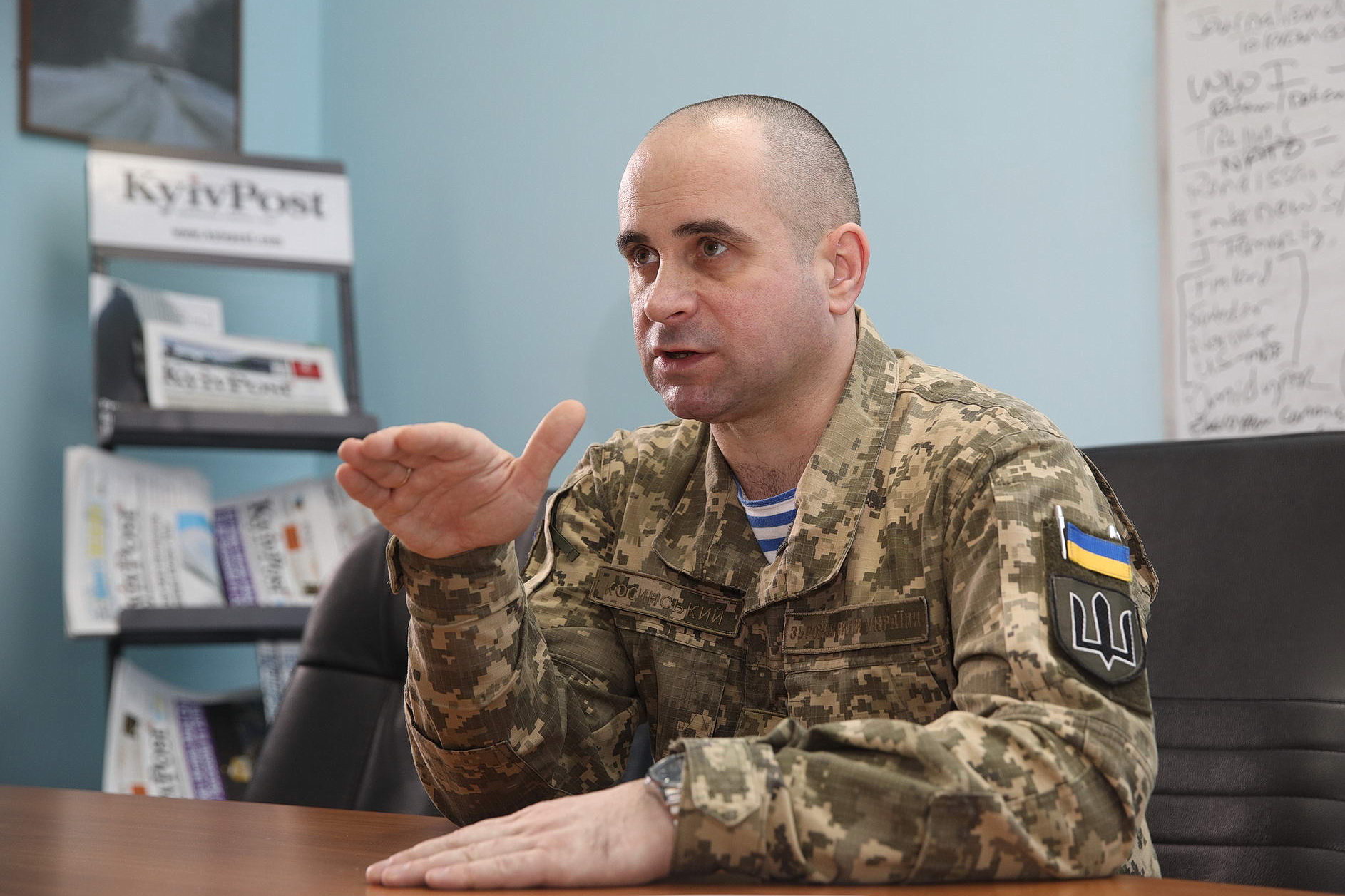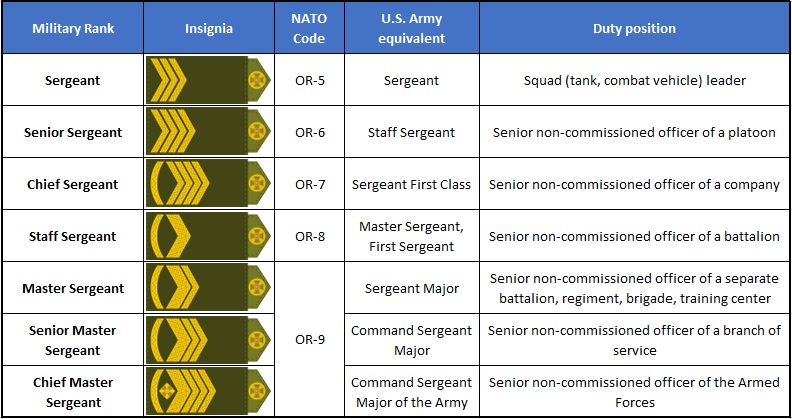When asked about defense reforms in Ukraine, NATO envoys in Kyiv say the Ukrainian Armed Forces are showing encouraging progress in creating a professional non-commissioned officer corps within its ranks.
Indeed, over the past years, the Ukrainian military has been investing heavily in its sergeants — the backbone of the army, putting in place advanced training and modern regulations, gleaned from best Western practices and own combat experience.
On top of that, a raft of crucial defense bills has been submitted to the Verkhovna Rada, including ones introducing new Western-style military ranks and on raising soldier’s wages. However, while the country’s top leadership vows to achieve full compliance with NATO standards by late 2020, most of the reform bills have been collecting dust in parliament for months, even years, without being voted on.
Meanwhile, as changes are delayed, many dedicated young sergeants are leaving the army to seek a better future in civilian life. If this goes on, one of Ukraine’s most promising military reforms may have come to nothing by 2020.
Heart of the force
In the modern Western military tradition, professional non-commissioned officers (NCO) play a crucial role in the army’s everyday life and service, taking care of every soldier on a daily basis, maintaining proper discipline and morale, organizing training, and managing their squads, platoons, companies, battalions, and divisions. NCOs handle the day-to-day issues of running an army, while commissioned officers are busy taking decisions and planning.
“In a professional army, sergeants and officers are two parallel hierarchy lines,” said Oleksandr Kosynskiy, the Command Senior Enlisted Leader of Ukraine’s Armed Forces, during a recent interview with the Kyiv Post.
“In NATO armies, a battalion commander and a battalion sergeant major are not a leader and a follower, but two equally weighted experts working in different ways.”

The command senior enlisted leader of Ukraine’s Armed Forces Oleskandr Kosynskiy talks to the Kyiv Post during the interview on Feb. 21. (Volodymyr Petrov)
“There are people who tend to prefer brain work, who love planning, strategy-making, so they are natural-born officers. However, others aspire to work with personnel, give training, directly lead soldiers into action, and so on. It is they who should become NCOs.”
Following this principle, Kosynskiy, who has been on peacekeeping missions in Sierra Leone and Iraq, and who is a combat veteran of Russia’s war on Ukraine in the Donbas, decided to continue his NCO career to stay in touch with his fellow soldiers, eventually becoming the most senior non-commissioned officer in the Ukrainian Armed Forces.
Back in 2010, he received squad leader training at the U.S. Marine Corps Base Camp Lejeune in Jacksonville, North Carolina. What he saw there persuaded him that the U.S. model of a sergeant service would fit Ukraine’s reforming army perfectly.
“In the United States, non-commissioned officers have more authorities, more career prospects,” he explained. “And this idea has proved itself. When sergeants assume more duties in the army’s everyday life and training, commissioned officers have more time to develop their brains, to make the right decisions and act as true strategists.”
New ranks
To reach full compliance with NATO forces, Kosynskiy and his colleagues drew up a brand new chain of military command that includes seven non-commissioned officer ranks: sergeant, senior sergeant, chief sergeant, staff sergeant, master sergeant, senior master sergeant, and chief master sergeant.
Similarly to U.S. Army rules, this full-fledged corps of NCOs is to take care of training and the everyday life of servicemen at all unit levels, starting from a squad of 3-12 soldiers led by a sergeant, to the entire Armed Forces, which would be supervised by the most senior NCO – the chief master sergeant.
The new arrangement of ranks matches the NATO scale that is universal to all alliance armies. Under the relevant NATO Standard Agreement, STANAG 2116, all privates and non-commissioned officers are coded as OR (“other ranks”) from OR-1 to OR-9 from bottom to the top. Meanwhile, officers are referred to as OFs under the same principle up to OF-10.

A proposed list of NATO-compatible ranks of non-commissioned officers for Ukraine’s Armed Forces (KyivPost)
A new Ukrainian sergeant would be equal to OR-5 – completely compatible with NATO chain of command during combined combat operations or drills.
Nevertheless, even though this job is basically done, the slow work of parliament may cause the reform to fail, Kosynskiy says. Draft bill No. 6372 on the new ranks was submitted back in April 2017; Almost a year later it is still being reviewed in committee and has not even passed first reading.
“It is important to understand that just passing the law is not enough,” Kosynskiy said. “It will take up to two years to actually introduce the new chain of command in the army. At this slow pace, we could miss the 2020 deadline.”
Underpaid
While Ukraine seeks to westernize its army, old Soviet habits – such as paying sergeants much less than officers – linger on.
According to Kosynskiy, the monthly salary of a Ukrainian non-commissioned officer whose unit is not deployed to the war zone ranges from approximately Hr 7,600 ($286) for a junior sergeant to Hr 9,400 ($350) for a brigade master sergeant. Only in the Airborne and the Marines – to be deemed the most elite and privileged branches of the armed services – are sergeants’ wages somewhat higher, at up to Hr 11,000 ($414) a month for a brigade master sergeant.
Even Kosynskiy himself, the top non-commissioned officer of the Armed Forces, is paid only Hr 9,500 ($358) a month. Meanwhile, a captain – normally the commander of a company – is paid at least Hr 11,000 ($421).
Wage increases for NCOs have been delayed time after time. In late December 2017, Ukraine’s Cabinet of Ministers put on hold until 2019 a decree that would have brought the wages of NCOs closer to those of officers; however, after deliberations, the government eventually enacted the decree on March 1.
Another important step in ensuring financial security for servicemen was made on Feb. 23, when a law was passed that would allow contract soldiers and sergeants to claim subsidies for rents if a military unit can’t provide accommodation. However, even this law is yet to be signed by President Petro Poroshenko.
As time marches on, more and more of the young, motivated and forward-minded sergeants, including distinguished combat veterans, are forced to leave the emerging NCO corps to obtain an officer rank, and thus better pay. Many more, worn down by grinding financial hardships and housing problems, are breaking their contracts, or not extending them.
“We’ve already lost lots of people,” Kosynskiy said. “The non-commissioned officer corps, above anything else, contains people with immense experience and great combat records. It takes nearly 15 years to be promoted to a brigade-level master sergeant. You can’t simply hire someone, put them through a couple of training courses, and then appoint them.”
“He must gain an experience of being a soldier; as NATO expertise says, it should take at least three years. Then he must gain an experience of being a squad leader, a platoon, and a company commander. That will take years. No amount of money buys you experience – it’s gained by taking part in numerous combat operations and exercises. Only after going through all that can one become a truly skillful non-commissioned officer.”
“And because of those delays in the Rada, we’re losing people who wanted to learn. We could create a good career system and a good training program now, but at the end of the day we might look up and see that there’s no one left to teach anymore.”
